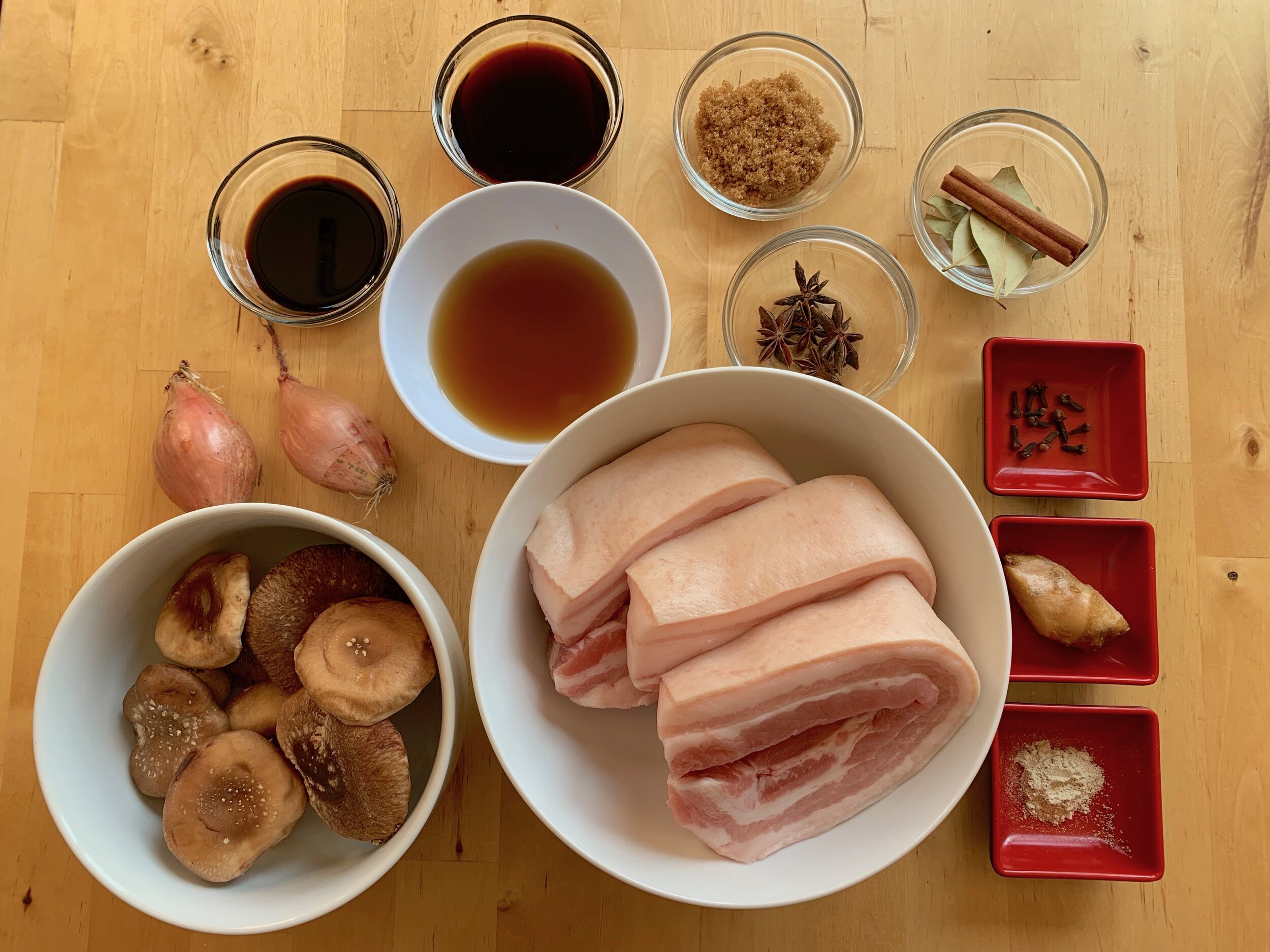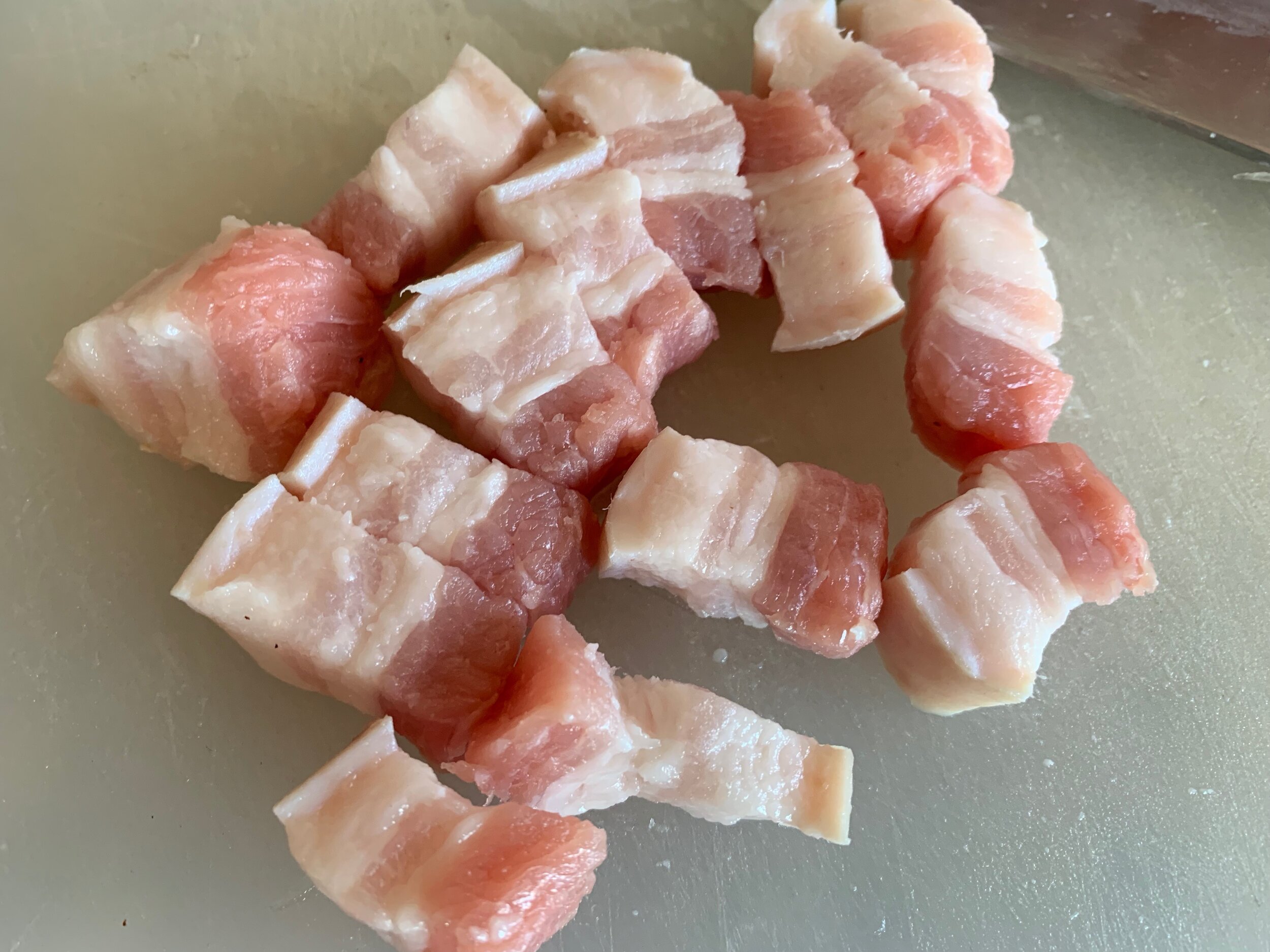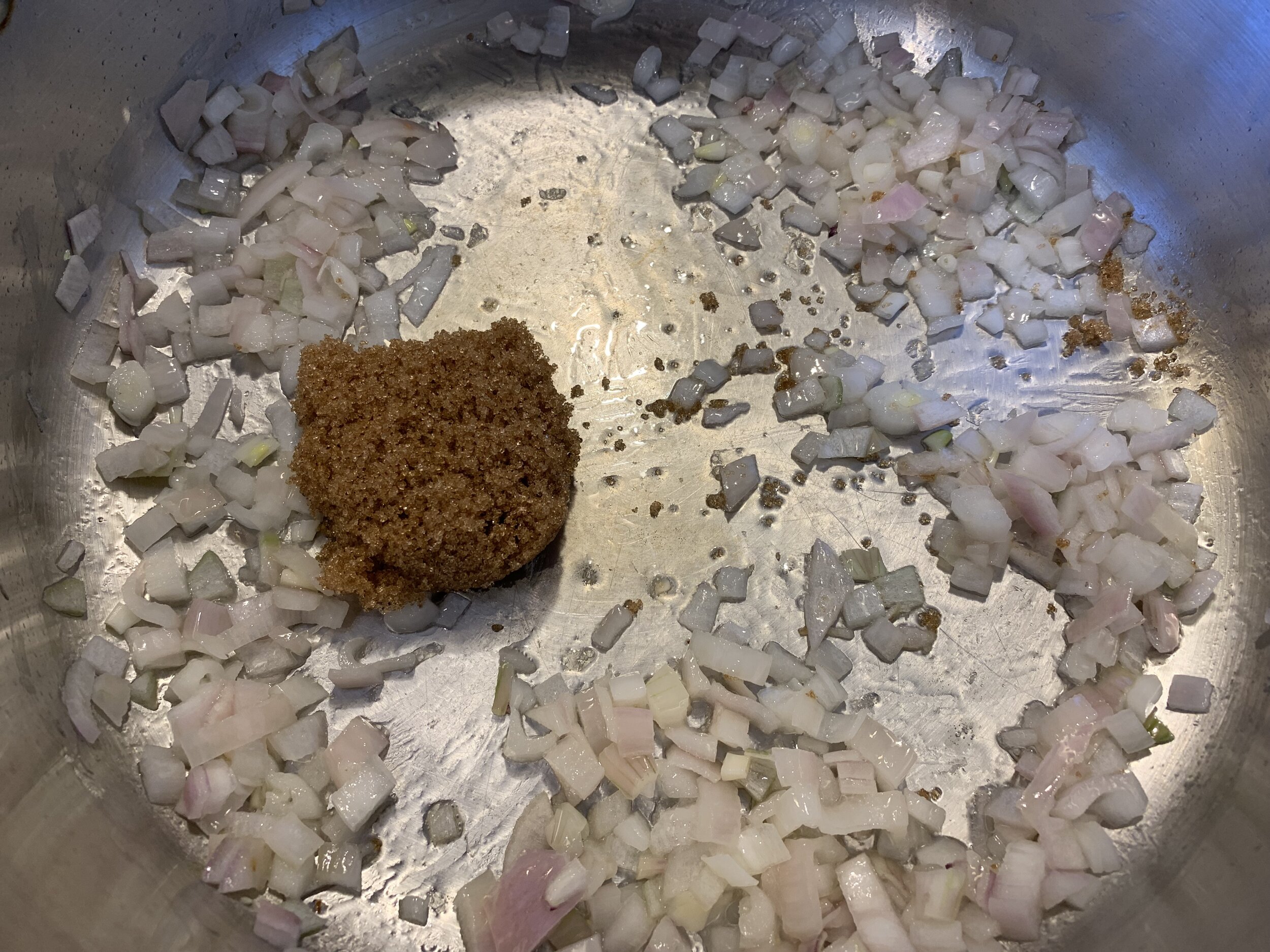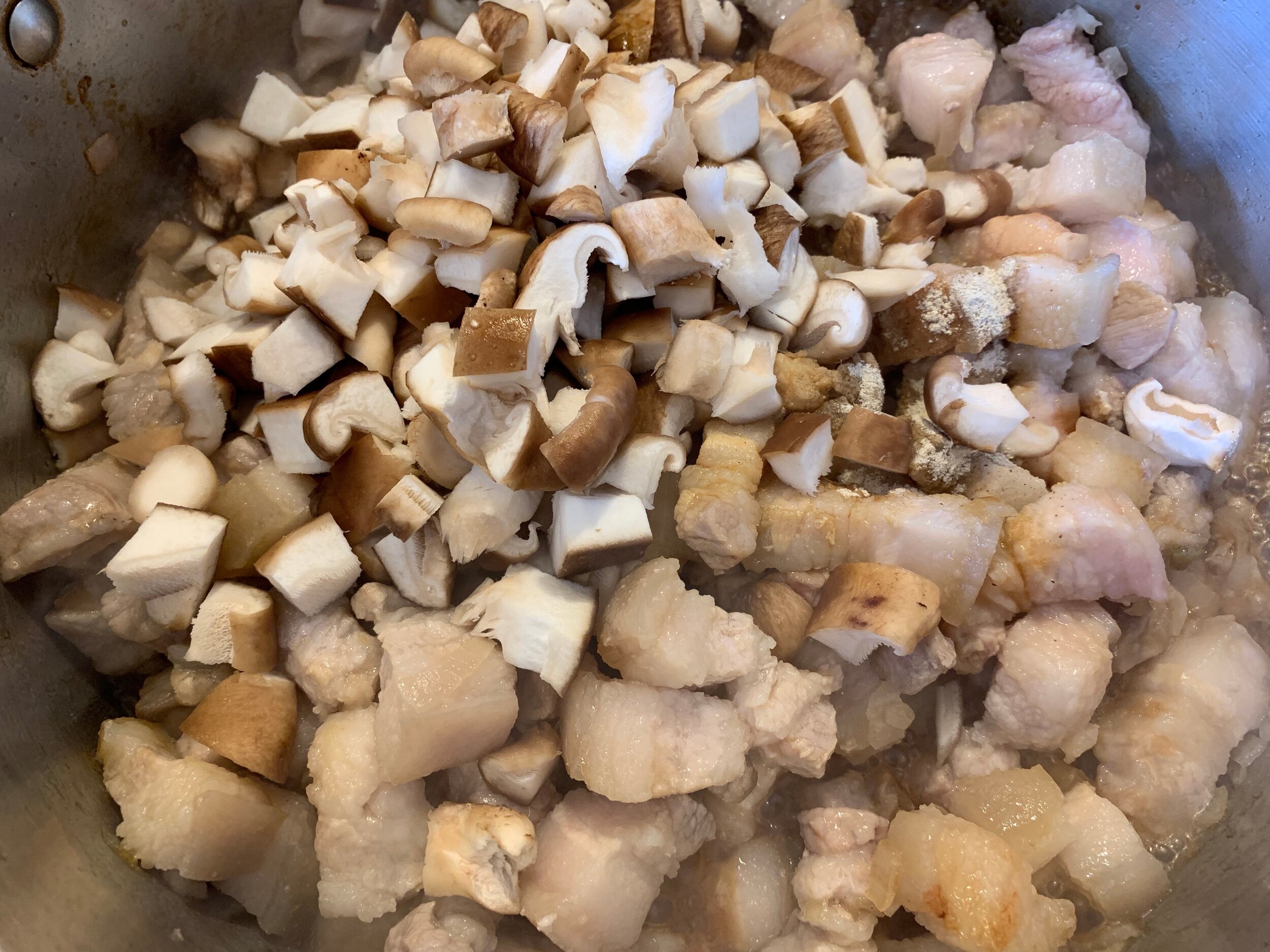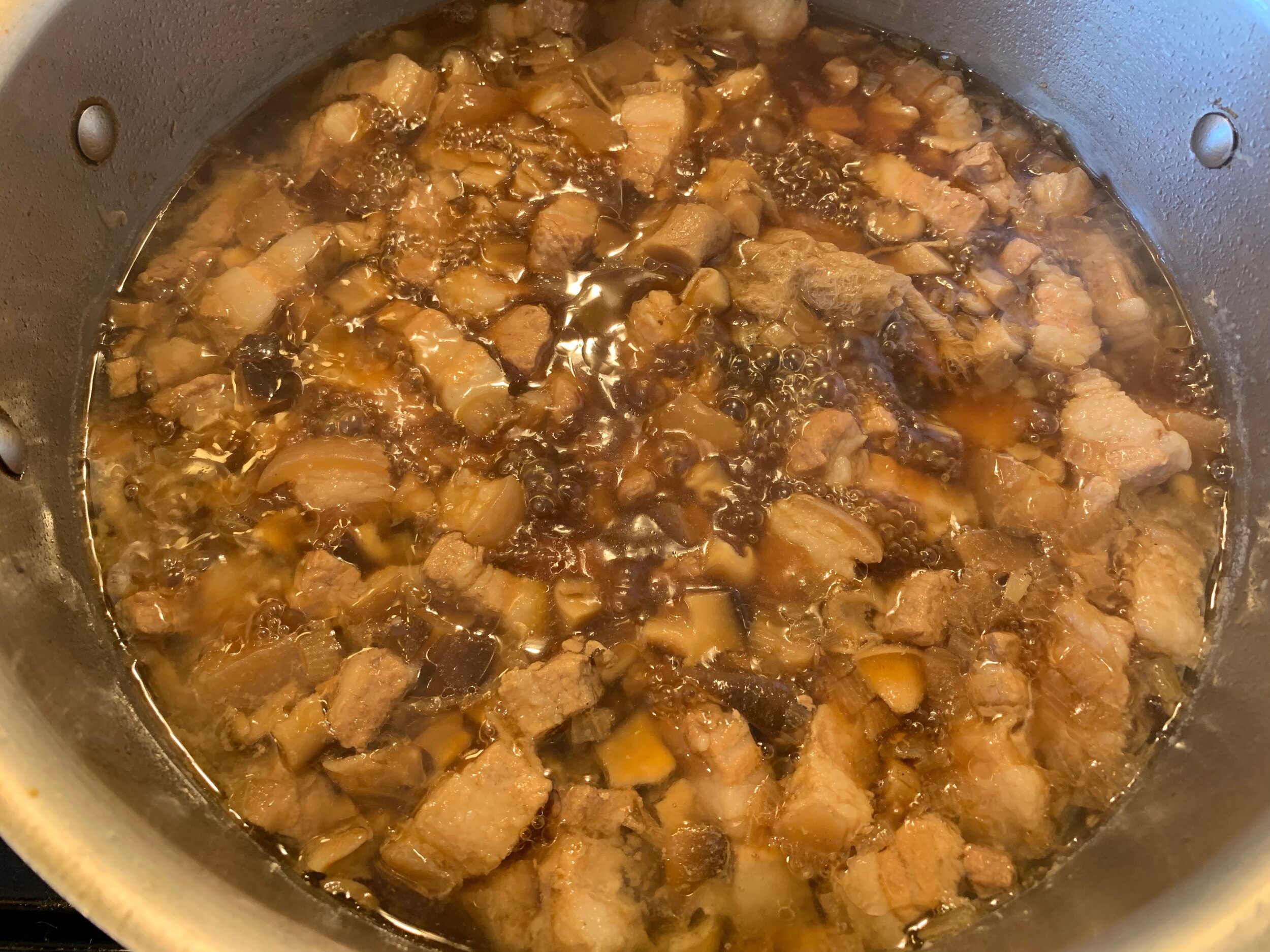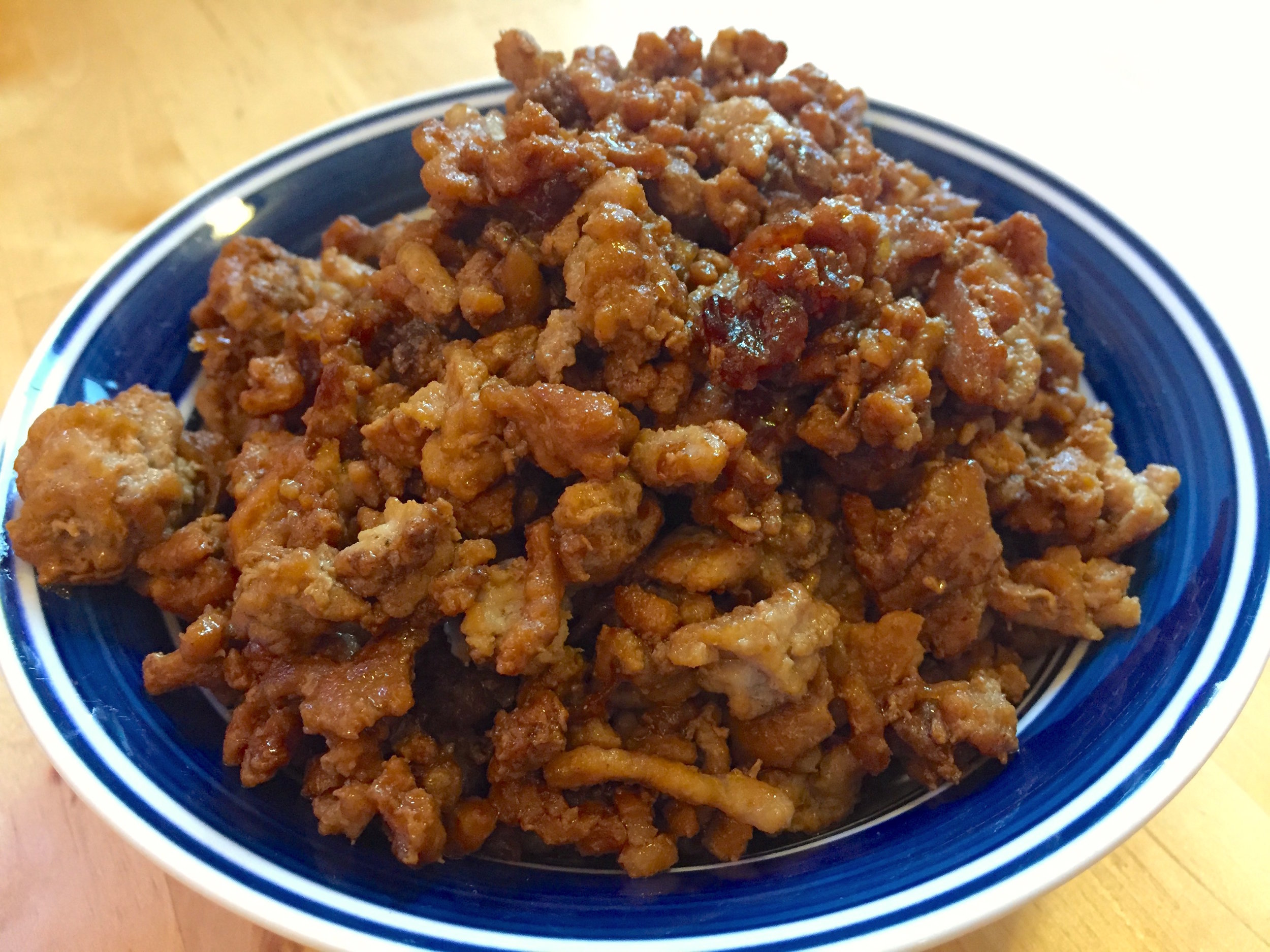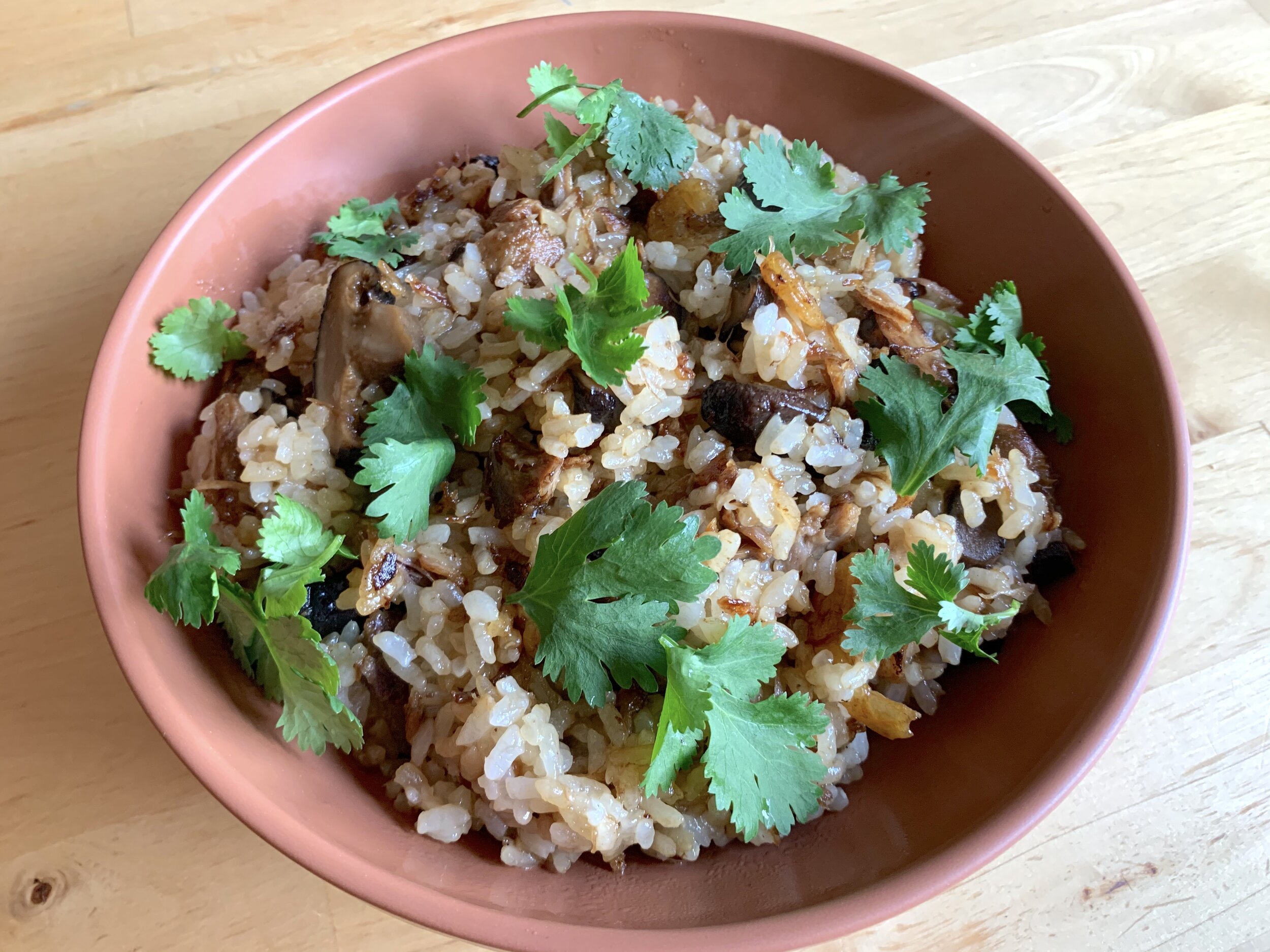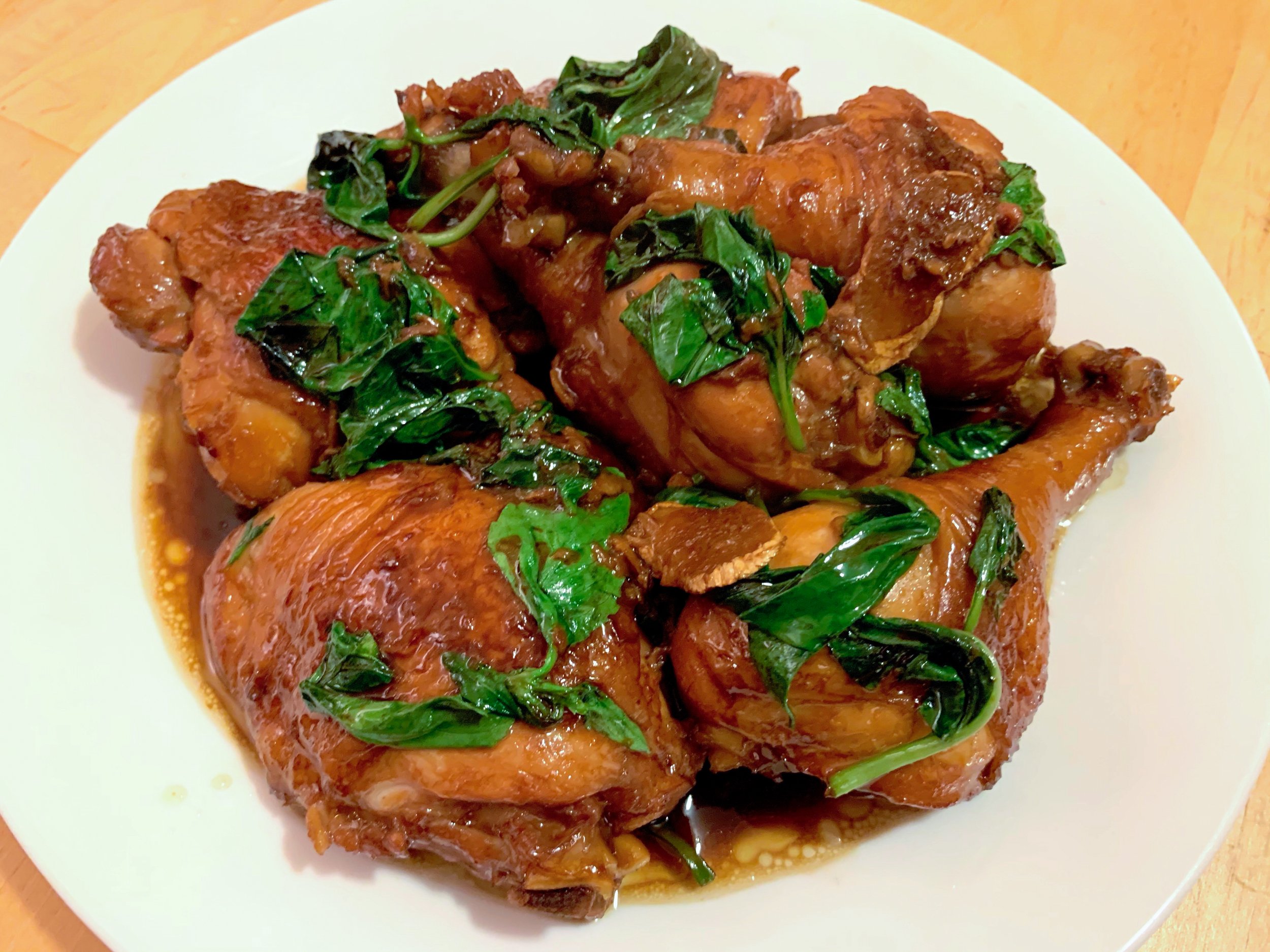Taiwanese Braised Pork

滷肉饭 (Lu Rou Fan)
Melt-in-your mouth chunks of pork belly braised in a rich, unctuous sauce and served over white rice, Taiwanese braised pork, or lu rou fan, [1] is the quintessential Taiwanese comfort food. The sauce is the star of this dish, savory, sweet, and lightly spiced with star anise, clove, and cinnamon. [2] It is a long braise, but the end results are worth the wait!
Ingredients
2 lb pork belly, roughly diced
2 shallots, minced
8 oz shiitake mushrooms, diced
⅓ cup soy sauce
¼ cup dark soy sauce
½ cup Shaoxing rice wine
2 tbsp brown sugar
½ tsp white pepper
5 star anise
1 cinnamon stick
10 cloves
2 inch ginger, sliced
3 bay leaves
Vegetable oil
Skin-on pork belly is traditional for this dish, but you can use either skin-on or skinless belly. Cut the pork belly into ½ inch pieces against the grain—each piece should be ½ inch by ½ inch square on the skin side, cutting through the belly so it includes some fat and some lean. Once the pork belly is diced, we can begin cooking.
In a large pot suitable for braising, heat about 1 teaspoon vegetable oil over medium heat. Add the diced shallots and fry, stirring occasionally, until softened, about 3 minutes. Then add 2 tablespoons sugar to the pot and cook, stirring constantly. Allowing the sugar to caramelize before we add the meat to the pot adds some depth of flavor to the pork, but it can burn easily, so keep it moving. Once the sugar is melted and the onions have softened, add the diced pork belly to the pot. Stir to coat the pork with the sugar, and brown the meat.
Why brown the pork prior to braising? By browning the meat, we will create a new set of savory flavors through the Maillard reaction, flavors which will be incorporated into our sauce during the braise. Let the pork pieces develop some color by frying them on one side for a few minutes, then toss to fry another side. Fry the pork pieces for 10 minutes total, until browned on several surfaces. While the pork browns, let us prepare our spice sachet.
A sachet is a food-safe bag of spices and/or herbs which can be added to a braise and easily removed when the cooking is complete. It is a convenient way to cook with whole spices which would otherwise have to be picked out of the dish prior to service. To make our spice sachet, cut an 8 inch square of cheesecloth and place in the center our whole spices: 5 star anise, 1 cinnamon stick, 10 cloves, 2 inches of ginger, cut into slices, and 3 bay leaves. Bring the corners together and tie the sachet closed with butcher’s twine, making sure that the cloves in particular can’t escape.
When the pork is well browned, we can add the rest of our ingredients to the pot. Begin with the diced mushrooms, followed by our braise: ⅓ cup soy sauce, ¼ cup dark soy sauce, ½ cup Shaoxing rice wine, and ½ tsp white pepper. Stir well, being sure to scrape up and dissolve any fond that has built up on the bottom of the pot in the browning process. Add our spice sachet to the pot, making sure to nestle it into the meat, and then add water until the pork is fully covered. Lid up and simmer, covered, over low heat, until the pork is very tender. If you’re in a rush, you can simmer it for just 1 hour, but I strongly recommend a 2 hour simmer, which gets the best out of the spices.
After 2 hours, the water level will likely have dropped slightly, and a good deal of fat will have been rendered from the pork belly. Remove the spice sachet from the pot and discard it. Skim off as much of the fat as you wish—I usually skim off about 2/3rds of it. Then turn the heat up to high and cook uncovered for 20 minutes. The goal of this step is to reduce the sauce by half, thickening it in the process. Maintain a vigorous boil, which helps emulsify the fat with the water phase of the sauce. Stir occasionally to prevent sticking and burning, especially near the end of the cook as the sauce thickens. Reduce until sauce is thick and glossy, then remove from the heat.
Serve the braised pork over rice or noodles, with plenty of the sauce. Some common additions to the rice bowl include a soy sauce egg, a fried egg, blanched bok choy, and some daikon pickles. Leftover braised pork refrigerates and freezes well.
Substitutions
You can substitute red onion for the shallot in the recipe. If you prefer more lean meat in this dish, use a 50/50 mix of pork belly and pork shoulder. You can add some bean curd to the braise, to cook alongside the pork. Some versions of this dish also include some preserved daikon radish or pickled mustard root.
This recipe is well suited to a slow-cooker, if you have one!
[1] “Lu rou fan” translates simply to “Braised pork rice.”
[2] This braised pork dish is similar in flavor profile to Taiwanese minced pork. However, the longer braise allows for the development of far greater depth of flavor.
Recipe
Prep Time: 15 min Cook Time: 2 hr 45 min Total Time: 3 hr
Difficulty: 2/5
Heat Sources: 1 burner
Equipment: large pot, cheesecloth, butcher’s twine
Servings: 10
Ingredients
2 lb pork belly, roughly diced
2 shallots, minced
8 oz shiitake mushrooms, diced
⅓ cup soy sauce
¼ cup dark soy sauce
½ cup Shaoxing rice wine
2 tbsp brown sugar
½ tsp white pepper
5 star anise
1 cinnamon stick
10 cloves
2 inch ginger, sliced
3 bay leaves
Vegetable oil
Instructions
1. Heat 1 tsp vegetable oil in a large pot over medium heat. Add the diced shallots to the pot and fry until softened, about 3 minutes.
2. Add the brown sugar to the pot and stir well. Fry the sugar with the shallots for 2 minutes, stirring constantly, until the sugar has melted and starts to caramelize. Then add the diced pork to the pot and fry the meat, tossing occasionally, until browned, about 10 minutes.
3. While the pork browns, wrap the star anise, cinnamon, cloves, ginger slices, and bay leaves in a piece of cheesecloth, and tie closed with butcher’s twine to form a spice sachet.
4. Once the pork is well browned, add the diced mushrooms to the pot, together with the soy sauce, dark soy sauce, rice wine, and white pepper. Stir well, scraping the bottom of the pot to dissolve any fond. Then add the spice sachet to the pot, and add water until the pork is covered.
5. Turn the heat to low and simmer, covered, for 2 hours.
6. When the pork is tender, remove the spice sachet and discard. Skim off some of the rendered fat, then turn the heat up to high and cook uncovered for 20 minutes, stirring occasionally, until the sauce thickens and reduces by half.
7. Serve the braised pork over rice, with plenty of sauce.
